If you’re like most people, you’ve probably heard the term “PHEV” tossed around in conversations about electric cars and sustainable transportation. But you may still find yourself wondering, “What is PHEV?”
PHEV stands for “plug-in hybrid electric vehicle,” and it’s a type of car that combines the benefits of both electric and gasoline-powered vehicles. PHEVs are able to run purely on electricity for a certain distance, after which their gasoline engine kicks in to provide additional power and extend their range.
But there’s much more to PHEVs than just that! In this section, we will explore in depth the meaning of PHEV, its numerous advantages, and how it differs from both traditional hybrid and electric vehicles.
Key Takeaways:
- PHEV stands for “plug-in hybrid electric vehicle.”
- PHEVs combine the benefits of electric and gasoline-powered vehicles.
- PHEVs can run purely on electricity for a certain distance.
- Their gasoline engine provides additional power and extends their range.
- In the following sections, we will explore the many advantages and benefits of PHEVs.
Understanding PHEV Technology
As I mentioned in the previous section, PHEVs combine the power of an internal combustion engine with an electric motor. This combination allows for better fuel efficiency and reduced emissions, making them an eco-friendly and cost-effective option for drivers. To achieve this, PHEVs use advanced technology that seamlessly integrates the two power sources.
One of the key components of PHEV technology is the battery. PHEVs have larger battery packs than traditional hybrid vehicles, which allows them to travel longer distances on electric power alone. The battery can be charged by plugging the vehicle into an external power source, which can be done at home or at a charging station.
Another crucial aspect of PHEV technology is the powertrain. The powertrain controls the flow of energy from the engine and the electric motor to the wheels of the vehicle. PHEVs have two different powertrains: one for the internal combustion engine and one for the electric motor. This allows the vehicle to switch seamlessly between electric and hybrid modes as needed.
PHEVs also use regenerative braking technology. This means that when the driver applies the brakes, the electric motor acts as a generator, converting the kinetic energy of the vehicle into electrical energy. This energy is then stored in the battery and can be used later to power the vehicle.
The combination of these advanced technologies allows PHEVs to achieve impressive fuel efficiency and performance. Additionally, PHEVs are equipped with a variety of features, such as regenerative braking and intelligent energy management systems, which help to optimize their overall efficiency.
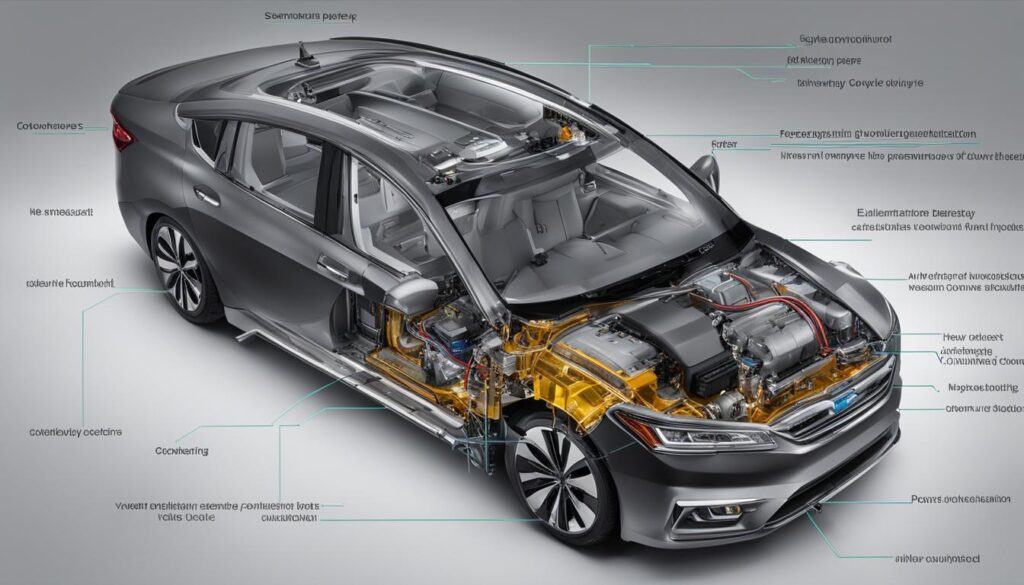
The integration of an internal combustion engine and an electric motor is the key to PHEV technology. It seamlessly combines the two power sources to achieve optimal fuel efficiency and performance.
Exploring the Benefits of PHEVs
When it comes to owning a vehicle, there are numerous advantages to choosing a PHEV over a traditional gas-powered car or even a hybrid. Let’s take a closer look at some of the key benefits:
- Reduced emissions: One of the most significant advantages of a PHEV is its ability to significantly reduce emissions when compared to traditional gas-powered cars. By relying on electric power for shorter drives and only utilizing the gas engine for longer trips, PHEVs emit less greenhouse gases and other pollutants. Ultimately, this results in cleaner air and a healthier environment for us all.
- Improved fuel economy: PHEVs have the unique ability to run on both electricity and gasoline. This allows for a much-improved fuel economy when compared to traditional vehicles, leading to significant savings in the long run.
- Potential cost savings: In addition to fuel savings, many states offer tax incentives and rebates for PHEV owners. Additionally, the cost of maintenance for PHEVs tends to be lower than that of gas-powered vehicles due to the reduced wear and tear on the engine and brakes.
- Versatility: With the ability to run on both electricity and gasoline, PHEVs offer a level of flexibility that traditional electric cars simply cannot match. PHEVs can drive for extended periods without needing to be charged, giving drivers more peace of mind on longer trips.
Overall, there are many compelling reasons to consider a PHEV as your next vehicle. By combining the best aspects of electric and gas-powered cars, PHEVs offer an efficient and eco-conscious solution to modern transportation needs.
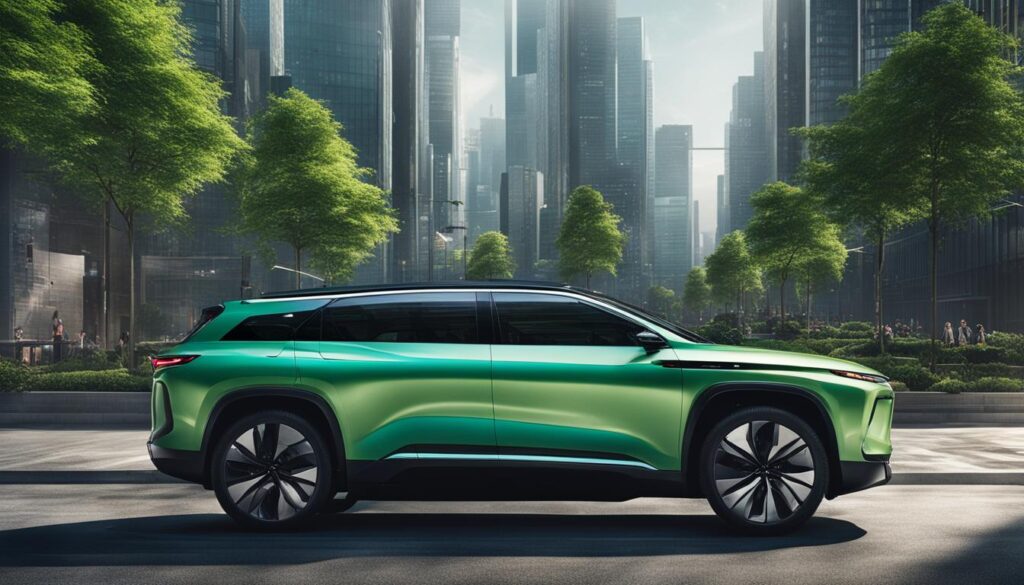
How Does a PHEV Work?
A PHEV is a complex machine that integrates advanced technology to provide optimal performance and fuel efficiency. In this section, we’ll delve into the inner workings of a PHEV and explain how it operates.
One of the key components of a PHEV is its ability to charge from an external power source. This allows the vehicle to run in electric mode for short distances, reducing emissions and improving fuel economy. When the electric charge depletes, the vehicle seamlessly switches to hybrid mode, where the internal combustion engine takes over.
But how does this all work together? Let’s take a closer look at the technology behind a PHEV.
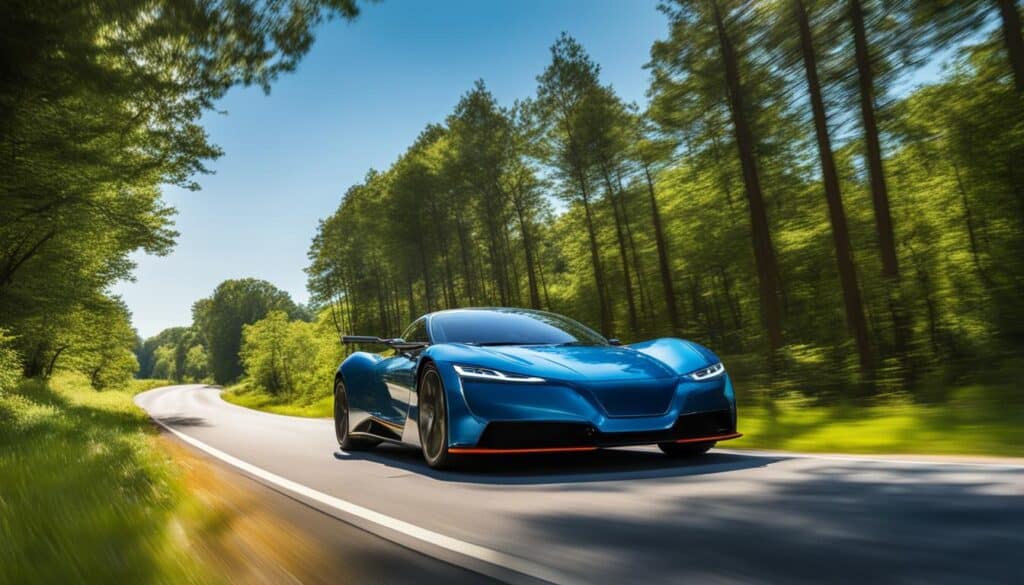
The electric motor in a PHEV works in conjunction with the internal combustion engine to provide power to the vehicle. The electric motor allows the vehicle to operate in electric-only mode, while the internal combustion engine provides power when the battery is depleted or additional power is needed for acceleration or hill climbing.
The battery in a PHEV is rechargeable and stores the electric power generated by regenerative braking or from an external power source. This allows the vehicle to operate in electric-only mode for a set distance, depending on the capacity of the battery. Once the electric charge depletes, the vehicle will automatically switch to hybrid mode.
When a PHEV is in hybrid mode, the internal combustion engine will be the primary power source, with the electric motor providing assistance when needed. The vehicle’s computer system will determine whether to use the electric motor or the internal combustion engine based on factors such as speed, acceleration, and battery charge level.
Overall, the technology behind a PHEV allows it to operate efficiently and effectively by combining the power of an internal combustion engine with an electric motor. This results in reduced emissions, improved fuel economy, and potential cost savings for the owner.
PHEV vs Hybrid: A Comparison
When it comes to alternative fuel vehicles, two popular options are PHEVs and traditional hybrids. While they share some similarities, there are also key differences to consider when deciding which one is right for you.
PHEV vs Hybrid: Fuel Efficiency and Range
| PHEV | Hybrid | |
|---|---|---|
| Fuel Efficiency | PHEVs have higher fuel efficiency due to their ability to run on electric power for a longer range. | Hybrids have lower fuel efficiency compared to PHEVs since they rely more on the internal combustion engine. |
| Range | PHEVs have a longer range since they can run solely on electricity before switching to the hybrid mode. | Hybrids have a shorter range since they rely more on the internal combustion engine. |
PHEV vs Hybrid: Charging and Maintenance
| PHEV | Hybrid | |
|---|---|---|
| Charging | PHEVs have a plug-in option that allows the battery to be recharged from an external power source. | Hybrids rely on regenerative braking to recharge the battery, which can take longer. |
| Maintenance | PHEVs have more complex systems and may require more maintenance than hybrids. | Hybrids have simpler systems and require less maintenance than PHEVs. |
Overall, PHEVs offer higher fuel efficiency and longer range, but they also have more complex systems and may require more maintenance. Hybrids, on the other hand, have simpler systems and require less maintenance, but they have lower fuel efficiency and shorter range compared to PHEVs.
When deciding between a PHEV and a hybrid, it’s important to consider your driving habits and transportation needs to determine which one is the best fit for you.
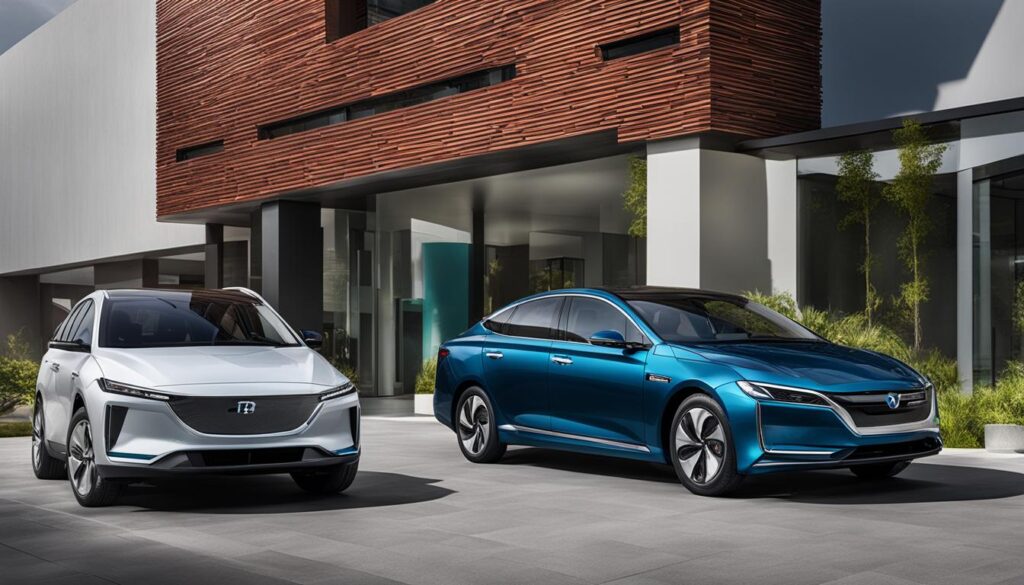
PHEV vs EV: Which is Right for You?
If you’re in the market for an eco-friendly vehicle, you may be considering both plug-in hybrid electric vehicles (PHEVs) and fully electric vehicles (EVs). While both types offer benefits for the environment and your wallet, there are important differences to consider when choosing the right one for your lifestyle.
One key difference between PHEVs and EVs is their power source. PHEVs combine an internal combustion engine with an electric motor and can run on both gasoline and electricity. In contrast, EVs solely rely on electricity for power and require recharging from an external power source.
Because of their reliance on gasoline, PHEVs typically have a longer driving range than EVs. However, EVs have come a long way in recent years and now offer increased driving ranges of up to 400 miles on a single charge. PHEVs are better suited for drivers who frequently travel long distances and require the ability to refuel quickly, while EVs are a great option for those with shorter commutes and access to charging stations.
Another factor to consider is cost. PHEVs are generally less expensive than EVs, but higher maintenance costs due to their dual power sources may offset the initial savings. On the other hand, EVs have lower maintenance costs, but are typically more expensive upfront.
When it comes to environmental impact, both PHEVs and EVs are significantly better for the environment than traditional gasoline-powered vehicles. PHEVs still emit greenhouse gases when running on gasoline, but overall have a lower carbon footprint than traditional gas-powered vehicles. EVs have zero emissions and are the most environmentally-friendly option.
Ultimately, the decision between a PHEV and EV depends on your individual needs and priorities. Consider factors such as driving range, charging accessibility, cost, and environmental impact to determine which type of vehicle aligns best with your lifestyle and values.
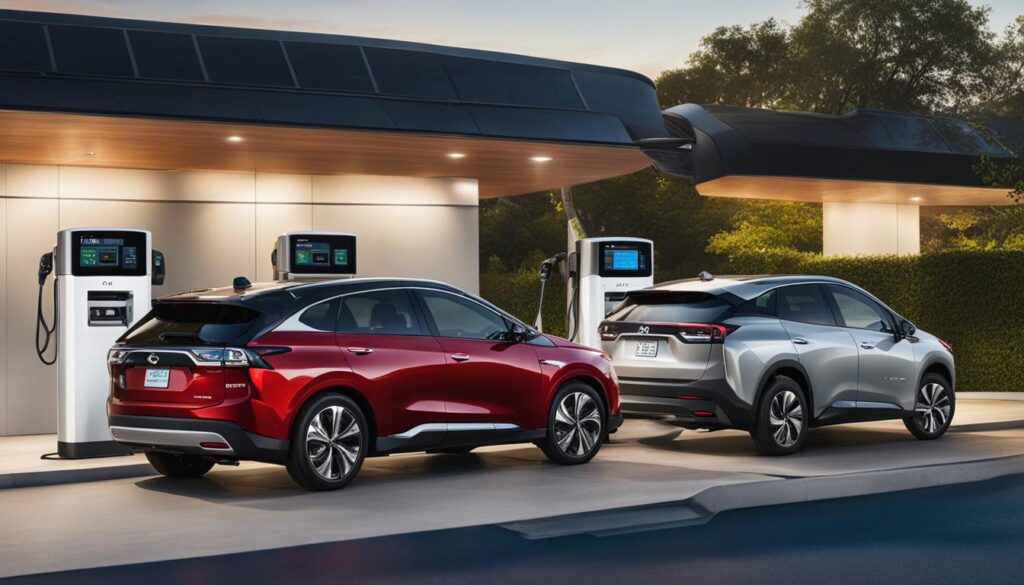
The Environmental Impact of PHEVs
As we strive towards a more sustainable future, PHEVs offer an eco-friendly alternative to traditional gas-powered vehicles. With their ability to reduce harmful emissions, PHEVs are an excellent choice for environmentally conscious consumers.
The environmental advantages of PHEVs are numerous. For starters, they produce fewer emissions than conventional vehicles. According to the U.S. Department of Energy, PHEVs emit less greenhouse gases than conventional vehicles, reducing the carbon footprint and helping to mitigate climate change.
Furthermore, PHEVs can run solely on electric power, eliminating emissions altogether. This feature not only reduces pollution but also helps to decrease dependence on fossil fuels and foreign oil.
In addition, PHEVs can promote cleaner, healthier air by reducing harmful pollutants such as nitrogen oxide and particulate matter. These pollutants have been linked to respiratory and cardiovascular diseases, making PHEVs a viable solution for improving public health.
Overall, the environmental benefits of PHEVs make them an attractive choice for consumers looking to reduce their impact on the planet. By choosing a PHEV, drivers can help to lower emissions, decrease dependence on fossil fuels, and promote cleaner, healthier air for all.
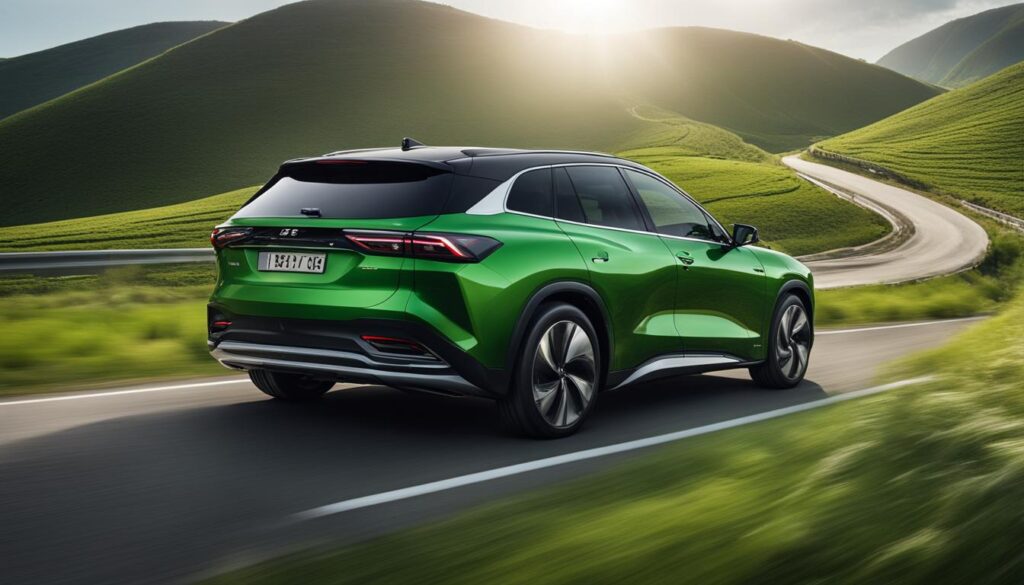
PHEVs and Sustainable Transportation
As we’ve explored throughout this article, PHEVs offer numerous benefits and advantages for the everyday driver. But beyond personal transportation, PHEVs also play a vital role in advancing sustainable transportation for a greener future.
With reduced emissions and improved fuel economy, PHEVs help to decrease the carbon footprint of transportation. This is especially important given that transportation is the largest contributor to greenhouse gas emissions in the United States, accounting for 29% of total emissions according to the Environmental Protection Agency.
Moreover, PHEVs have the potential to significantly reduce our dependence on fossil fuels and increase the use of renewable energy sources. As charging infrastructure and renewable energy sources continue to expand, PHEVs offer a practical solution for reducing emissions and advancing sustainable transportation.
As technologies continue to evolve, PHEVs have the potential for widespread adoption in the coming years. With increasing government incentives and tax credits, PHEVs are becoming a more affordable option for consumers. Not to mention, PHEVs offer drivers the flexibility of both electric and hybrid driving, making them a practical choice for anyone looking to reduce their carbon footprint.
The Role of Automakers
Automakers also play a critical role in advancing sustainable transportation through the development and production of PHEVs. As more consumers demand sustainable options, automakers are responding by investing in PHEV technology and improving performance and range.
For instance, leading automakers like Toyota, Ford, and Honda, have all released PHEV models in recent years. Additionally, luxury brands like BMW and Mercedes Benz have also entered the PHEV market with models like the BMW i8 and Mercedes S560e.
| Automaker | PHEV Model |
|---|---|
| Toyota | Toyota Prius Prime |
| Ford | Ford Fusion Energi |
| Honda | Honda Clarity Plug-in Hybrid |
| BMW | BMW i8 |
| Mercedes Benz | Mercedes-Benz S560e |
With the growing popularity of PHEVs, automakers are likely to continue investing in the technology and advancing its capabilities. This will not only benefit consumers but also contribute to a more sustainable future for all.
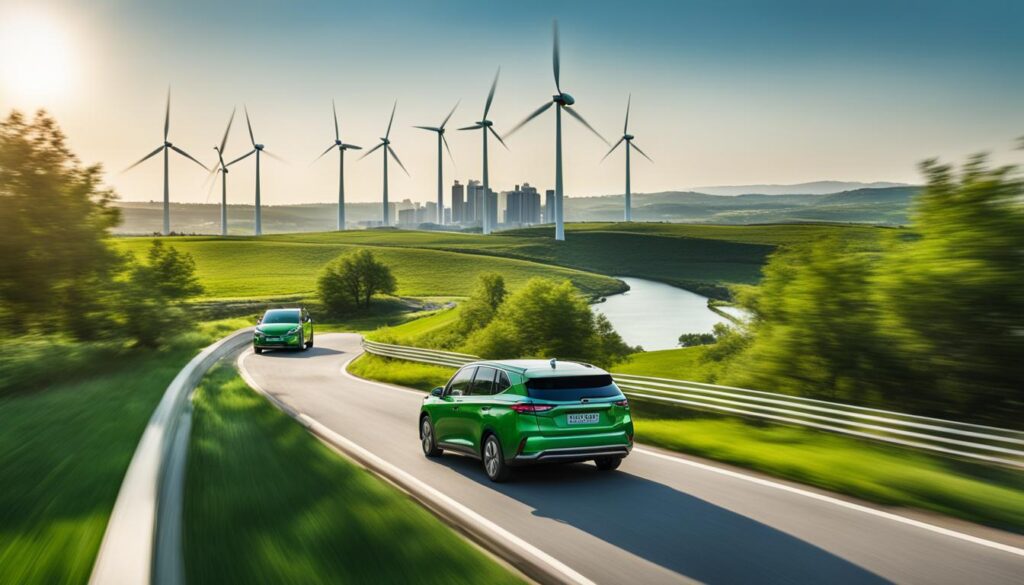
Overall, PHEVs offer numerous benefits for both personal transportation and sustainable transportation. As we move towards a greener future, PHEVs are sure to play a critical role in advancing sustainable transportation and reducing our carbon footprint.
PHEVs and Charging Infrastructure
One of the key benefits of PHEVs is their flexibility in terms of charging options. PHEVs can be charged using a standard household outlet, a dedicated charging station, or even regenerative braking. Additionally, PHEVs can be easily fueled with gasoline when necessary, providing added convenience and peace of mind.
However, to fully take advantage of a PHEV’s electric capabilities, it is important to have access to a robust charging infrastructure. This includes public charging stations located in convenient locations like parking lots and shopping centers, as well as workplace charging options and fast-charging stations for longer trips.
The availability of charging infrastructure varies greatly by location, with some areas having a more developed network than others. However, as PHEVs and other electric vehicles become more popular and mainstream, there is an increasing push to expand and improve charging infrastructure across the country.
Current State of PHEV Charging Infrastructure in the US
According to the US Department of Energy, as of March 2021, there are over 103,000 charging ports across the United States, with over 40,000 of those being public stations. This number is expected to continue to grow rapidly in the coming years.
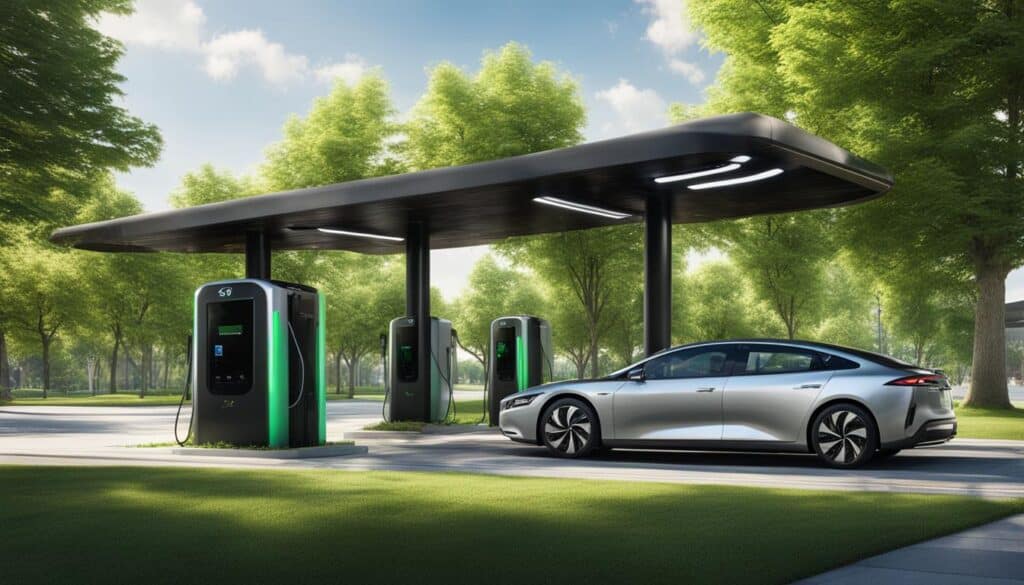
One of the biggest challenges currently facing the development of charging infrastructure is the need for standardization. There are currently several different types of chargers available, each with their own unique plug configurations and power levels. This can make it difficult for consumers to know which charger to use and can result in frustration and confusion.
The Future of PHEV Charging Infrastructure
Looking ahead, there is a push for increased standardization and interoperability between charging stations. This includes the development of universal charging standards and the implementation of smart charging technology that can communicate with vehicles to optimize charging times and minimize strain on the grid.
Additionally, many states and local governments are offering incentives and funding to help expand charging infrastructure, with the goal of making electric vehicles and PHEVs more accessible and convenient for consumers.
Overall, while there are still challenges to be addressed, the future looks bright for PHEV charging infrastructure. With continued investment and innovation, we can expect to see a more robust and reliable network of charging stations across the country in the years to come.
PHEVs and Government Incentives
One of the major advantages of owning a PHEV is the availability of government incentives and tax credits aimed at promoting sustainable transportation. These incentives can significantly reduce the cost of purchasing and operating a PHEV and make them a more affordable option for consumers.
The U.S. federal government offers a tax credit of up to $7,500 for the purchase of a new PHEV, depending on the battery size and the vehicle’s range. In addition, some states offer further incentives, such as tax credits, rebates, or reduced registration fees, to encourage the adoption of PHEVs.
Aside from financial incentives, owning a PHEV can also result in potential cost savings for drivers due to their improved fuel economy and reduced maintenance costs. PHEVs typically have a higher upfront cost than traditional gasoline-powered vehicles or hybrid vehicles, but the savings on fuel and maintenance costs over time can offset the initial price difference.
Example of Comparison Table:
| PHEV Advantages | Gasoline-Powered Vehicles | Traditional Hybrid Vehicles |
|---|---|---|
| Reduced emissions | Higher emissions | Lower emissions than gasoline-powered vehicles, but still emit some greenhouse gases |
| Improved fuel economy | Lower fuel economy | Higher fuel economy than gasoline-powered vehicles, but lower than PHEVs |
| Potential cost savings | Higher fuel and maintenance costs | Lower fuel and maintenance costs than gasoline-powered vehicles, but higher than PHEVs |
In conclusion, the availability of government incentives and tax credits makes owning a PHEV an attractive and affordable option for consumers looking to reduce their carbon footprint and support sustainable transportation. With their numerous advantages and potential cost savings, PHEVs are a practical and eco-friendly alternative to traditional gasoline-powered vehicles or hybrid vehicles.

The Future of PHEVs
As the world continues to prioritize sustainability, the future of PHEVs looks bright. With advancements in PHEV technology, including more efficient batteries and faster charging times, PHEVs are becoming an increasingly viable option for eco-conscious consumers.
One of the most exciting developments in PHEV technology is the potential for wireless charging. This technology would allow PHEV owners to recharge their vehicles without connecting them to a charging station, making charging even more convenient and accessible.
Another area of focus for PHEV manufacturers is improving the range of these vehicles. While PHEVs already offer better range than traditional electric vehicles, there is still room for improvement. With better range, PHEVs could become an even more attractive option for drivers in search of greener transportation.
As PHEV technology continues to evolve, it’s likely that we’ll see even more innovative features and capabilities in these vehicles. From enhanced performance to greater efficiency, PHEVs are poised to play a significant role in the future of sustainable transportation.

“As PHEVs continue to gain traction, and as more countries and municipalities institute policies that incentivize or require adoption of low-emissions vehicles, PHEVs may represent a significant growth opportunity in the automotive industry.” – McKinsey & Company
Conclusion
After exploring the world of PHEVs, I am convinced that they are the future of sustainable transportation. The benefits of PHEVs, including reduced emissions, improved fuel economy, and potential cost savings, make them an attractive option for consumers looking to adopt environmentally conscious driving habits.
The advanced technology behind PHEVs, which combines the power of an internal combustion engine with an electric motor, results in optimal performance and fuel efficiency. And while PHEVs may not be suitable for everyone, their unique combination of electric and hybrid technologies make them a versatile option for a variety of driving needs.
As the automotive industry continues to evolve, PHEVs are poised for significant growth and advancements. Battery technology, range improvements, and enhanced performance are just a few of the exciting developments on the horizon for PHEVs.
Furthermore, with the availability of government incentives and tax credits, owning a PHEV has never been more affordable. And with the increasing presence of charging infrastructure across the country, recharging your PHEV has never been more convenient.
In conclusion, PHEVs offer a promising solution for individuals looking to make a positive impact on the environment while still enjoying the benefits of a traditional vehicle. With their advanced technology, environmental benefits, and potential for widespread adoption, the future of PHEVs is bright.
FAQ
What is a PHEV?
A PHEV, or plug-in hybrid electric vehicle, is a type of vehicle that combines an internal combustion engine with an electric motor. It can be charged from an external power source and offers both electric and hybrid modes of operation.
How does a PHEV work?
A PHEV operates by using its electric motor, its internal combustion engine, or both in combination. It can charge its electric battery using an external power source and seamlessly switches between electric and hybrid modes based on driving conditions.
What are the advantages of owning a PHEV?
Owning a PHEV has several advantages, including reduced emissions, improved fuel economy, potential cost savings on fuel and maintenance, and the ability to drive in electric mode for shorter commutes.
How does a PHEV compare to a traditional hybrid?
PHEVs and traditional hybrids both combine an internal combustion engine with electric power, but PHEVs have larger battery packs that allow for extended electric driving range and the ability to plug in and recharge.
What is the difference between a PHEV and an electric vehicle (EV)?
PHEVs have both an electric motor and an internal combustion engine, allowing for longer range and the ability to refuel at gas stations. EVs, on the other hand, rely solely on electricity to power the vehicle and have no internal combustion engine.
How do PHEVs contribute to reducing greenhouse gas emissions?
PHEVs reduce greenhouse gas emissions by operating in electric mode for shorter trips, where they produce no tailpipe emissions. Even in hybrid mode, they are more fuel-efficient than traditional vehicles, resulting in lower overall emissions.
Is there enough charging infrastructure for PHEVs?
Charging infrastructure for PHEVs is becoming more widely available, with an increasing number of public and private charging stations. However, the availability may vary depending on the region, so it is important to consider the charging infrastructure in your area.
Are there any government incentives for purchasing a PHEV?
Yes, there are various government incentives and tax credits offered for purchasing and using PHEVs. These incentives vary by country and region, so it is advisable to check with local authorities or consult a tax professional to determine the specific incentives available to you.
What does the future hold for PHEV technology?
The future of PHEVs looks promising, with ongoing advancements in battery technology, range improvements, and enhanced performance. As the demand for sustainable transportation continues to grow, PHEVs are expected to play a significant role in the automotive industry.




